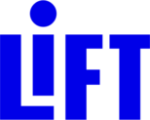This summer I attended a two-day NeighborWorks America financial coaching training in Detroit. Participants from across the country learned essentials and how to integrate coaching skills into financial capability programs. With financial coaching and goal-setting a key component of LIFT-DC’s approach to helping low-income parents build a brighter future for themselves and their children, the training provided me with an invaluable toolkit for the work we’ll start soon.
The coaching concept is essentially the specialization in long-term behavior change. Why behavior, you ask? Just consider what it takes to lose weight, learn the guitar or save up for a financial goal. Because behavioral change is a process that takes place over time, the coaching model is a lot like how you’d go about planning and taking a journey. With that in mind, here’s a breakdown of what financial coaching will look like at LIFT-DC:
1. Coaches help members decide where they want to go. The power of coaching lies in turning beliefs and aspirations into action (outcomes must be specific and time-bound). It starts with identifying what a member wants to achieve and why it matters. Goals can be useful in an environment of scarcity because they help us be efficient with our time and resources. A member-activated goal – one they own and fully commit to – ensures that the coaching partnership is driven by the member and not the coach, and thus members are far more likely to make the changes.
During our listening tour, LIFT-DC heard parents and caregivers name big, beautiful financial goals for their families – like saving for homeownership or returning to school – and we’re excited to support them getting there.
2. Coaches guide members to see where they are currently. A coach helps assess the present situation (strengths, obstacles), including what’s going well and not so well. When it comes to financial capability, it’s useful to discuss a member’s relationship with money, which likely started as a child.
In DC we know we’ll need to create a safe space defined by mutual respect, trust and freedom of expression to have these tough conversations with members. We’ll help people examine their budgets, understand credit reports and discuss what influences their spending.
3. Coaches collaborate with members to map a route forward. While a complex goal may initially be daunting, a coach can help define incremental steps towards success. It begins with brainstorming options that will help members be successful, like opening a checking account to free up income for savings that would otherwise go to check cashing services. Coaches do not tell members what to do, but rather ask the right questions and provide helpful resources that enable them to design a pathway to their goal.
At LIFT-DC, educational tools such as Bank of America’s Better Money Habits will be at the fingertips of coaches when relevant money management methods and financial terms will support a member’s progress.
4. Coaches provide accountability and monitor progress. Once the path is identified, coaches ask for commitment to action: what will the member do, by when? Coaches check in remotely or in person. A coach can also help by celebrating accomplishments to keep members motivated, or reframing obstacles or “failures” as opportunities for growth and recalibration.
At LIFT-DC we believe that parents and caregivers are creative, resourceful and capable of achieving desired changes in their life. We also know that everyone can benefit from external support, and we strive to provide it. To help, we’ll also be providing direct cash assistance to participating parents that can enable positive behaviors like paying down debts or setting aside savings.
For LIFT-DC’s members, we believe that the payoff of financial coaching will come as they see possibility, reach key financial milestones and develop the confidence to achieve success in other financial areas.
We’re thrilled for what’s ahead of us at LIFT-DC, and I hope this helps explain a little more about why!
